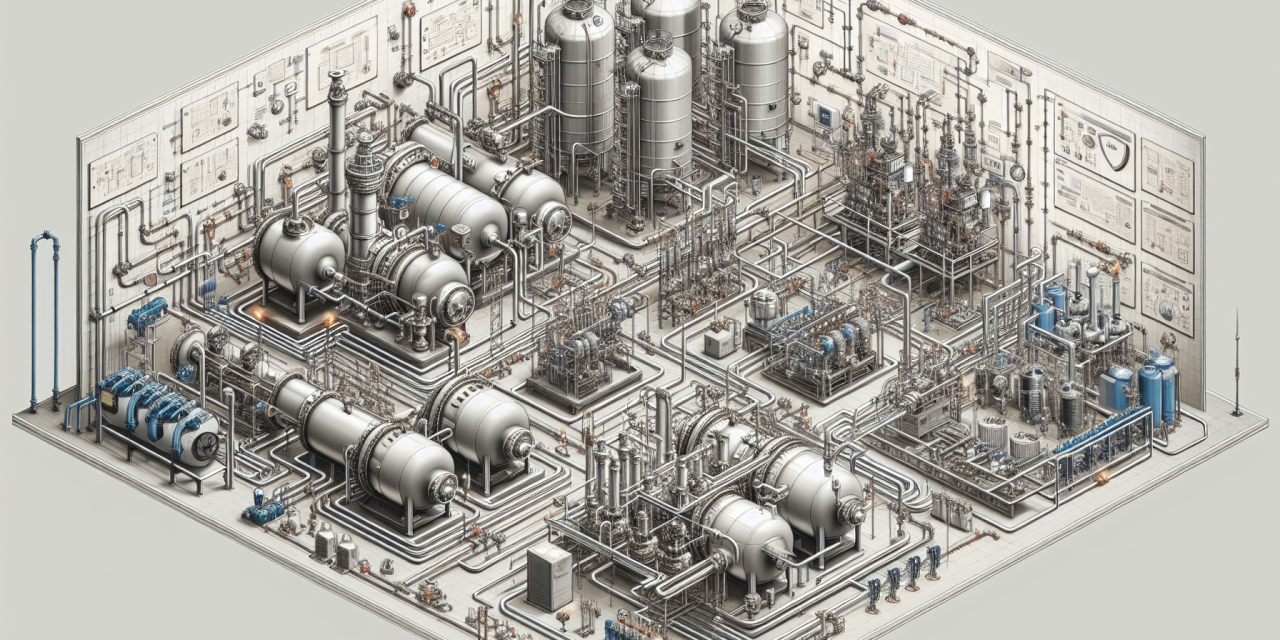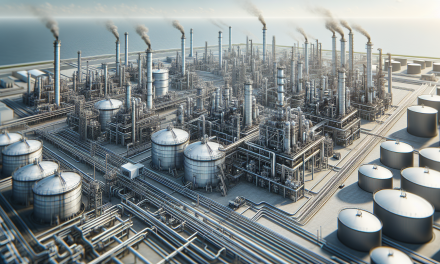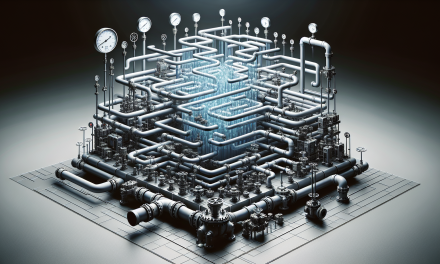Table of Contents
- Introduction
- Understanding Process Equipment and Piping Systems
- Application of Process Equipment and Piping Systems
- Design Considerations
- Failure Prevention Strategies
- Repair Strategies
- FAQs
- Conclusion
Introduction
Process equipment and piping systems are the backbone of various industrial operations. These elements play a critical role in transporting fluids, transferring heat, and facilitating chemical reactions. However, they also present unique challenges that require keen understanding and innovative solutions. This blog post explores the application, design considerations, failure prevention strategies, and repair techniques related to process equipment and piping systems. Whether you’re a seasoned engineer or new to the industry, you’ll find valuable insights that can enhance your understanding of this essential aspect of engineering.
Understanding Process Equipment and Piping Systems
What is Process Equipment?
Process equipment refers to various machines and tools used in industrial processes for producing, transporting, and processing goods. This equipment includes reactors, heat exchangers, pumps, compressors, and tanks. Each type of equipment serves a specific function, contributing to the overall efficiency and productivity of the operation. Often, process equipment operates under extreme conditions, increasing the need for robust design and regular maintenance.
The Concept of Piping Systems
Piping systems encompass the network of pipes and associated components that transport fluids throughout a facility. These systems are designed to handle liquids, gases, and even solids, facilitating the movement between different equipment. A successful piping system integrates components such as valves, fittings, and supports, forming a cohesive network that maximizes efficiency while minimizing loss.
Application of Process Equipment and Piping Systems
Industries Utilizing Process Equipment and Piping Systems
Various industries rely heavily on process equipment and piping systems. These include but are not limited to:
- Oil and Gas: Transporting crude oil and natural gas through pipelines and refining them in specialized equipment.
- Chemical Manufacturing: Utilizing reactors and distillation columns for chemical reactions and separations.
- Food and Beverage: Processing ingredients, including brewing, pasteurizing, and packaging.
- Pharmaceuticals: Careful handling of chemicals and biology related to drug manufacturing.
Critical Roles in Operations
In operational settings, process equipment and piping systems serve critical functions, such as:
- Efficient flow of materials ensuring minimum downtime.
- Temperature and pressure regulation for safety and quality control.
- Facilitating complex chemical reactions while preventing contamination.
Design Considerations
Designing process equipment and piping systems involves careful planning and consideration of various factors that can significantly impact performance.
Factors Affecting Design
Some of the most vital factors to consider include:
- Fluid Characteristics: Understanding the properties of the fluids involved, including viscosity, corrosiveness, and temperature.
- System Capacity: Determining the required flow rates that the system must accommodate.
- Environmental Conditions: Considering external factors such as temperature and pressure variations that may affect system performance.
Innovative Design Practices
Employing innovative practices can lead to more efficient and reliable systems. Techniques such as the use of advanced modeling and simulation tools help in optimizing designs. Additionally, adherence to industry standards and guidelines fosters safety and efficiency. Resources like the Process Equipment & Piping Design: Prevention & Repair Course can provide deeper insights into effective design strategies.
Failure Prevention Strategies
Preventing failures in process equipment and piping systems can save organizations time and money. Therefore, implementing effective strategies is crucial.
Common Failure Modes
Being aware of common failure modes can help engineers to strategize better. Some of these include:
- Corrosion, which can lead to leaks and reduced system integrity.
- Fatigue, caused by cyclic loading and temperature variations.
- Clogging due to debris or sediment buildup.
Preventive Maintenance Best Practices
Regular maintenance plays a significant role in reducing the likelihood of failures. Best practices include:
- Establishing a routine inspection schedule to detect issues early.
- Utilizing advanced condition monitoring technologies.
- Training staff on proper operational procedures and safety protocols.
Repair Strategies
When failures occur, having effective repair strategies can minimize downtime and costs.
When to Repair or Replace
Deciding whether to repair or replace failing equipment is crucial. Factors to consider include:
- Cost of repairs versus replacement.
- Expected service life of the equipment.
- The impact of prolonged downtime on operations.
Effective Repair Methods
Repair methods vary depending on the nature of the failure.
- Welding: Commonly used to repair piping systems and equipment.
- Coatings: Applying specialized coatings to protect against corrosion.
- Parts Replacement: Replacing worn or damaged components to restore functionality.
FAQs
What are the main components of process equipment?
The main components of process equipment include reactors, heat exchangers, pumps, compressors, and storage tanks.
How can I ensure my piping system remains efficient?
Regular maintenance, including inspections and condition monitoring, can help maintain efficiency in piping systems.
What are the different methods of repairing piping systems?
Methods include welding, using epoxy coatings, and replacing components.
Conclusion
In summary, understanding the intricacies of process equipment and piping systems is essential for optimizing operations across various industries. Effective design considerations, proactive failure prevention strategies, and efficient repair methods collectively contribute to the success of these systems. By staying informed and implementing best practices, you can enhance the reliability and efficiency of your process operations. For more in-depth insights, consider exploring resources like this comprehensive guide or mastering troubleshooting techniques. Further your knowledge by accessing materials such as fundamentals of mechanical engineering technology and essentials of process and mechanical technology. Lastly, explore petroleum laboratory management for more specialized knowledge.





